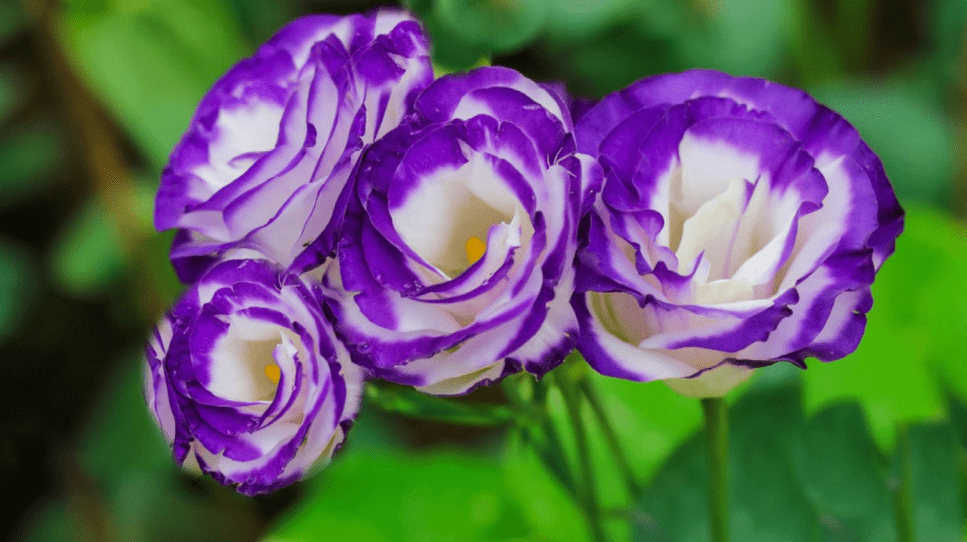
Lisianthus Plant: How to Grow and Care for These Gorgeous Flowers
Lisianthus plants are known for their stunning, rose-like blooms and are a favorite among gardeners and flower enthusiasts. In this blog post, we will provide you with a comprehensive guide on how to grow and care for these gorgeous flowers. From planting to maintenance, we will cover all the essential tips and tricks to help you cultivate healthy and vibrant lisianthus plants in your garden. Whether you’re a beginner or experienced gardener, this guide will help you successfully grow and enjoy these beautiful blooms.
Table of Contents
ToggleUnderstanding the Lisianthus Plant
A. Botanical name and classification
The lisianthus plant, also known as Eustoma, belongs to the Gentianaceae family and is native to the southern United States, Mexico, and the Caribbean. Its botanical name is Eustoma grandiflorum.
B. Different varieties and colors of lisianthus
The lisianthus plant, also known as Eustoma, comes in a variety of colors and varieties. Some common colors include white, pink, purple, and blue. There are also double-flowered and single-flowered varieties, each with its own unique characteristics. When choosing which type of lisianthus to grow, consider factors such as the climate in your area and the specific look you want to achieve in your garden. With proper care and attention, you can enjoy the beauty of lisianthus blooms in a range of colors and forms.
Choosing the Right Lisianthus Varieties
A. Popular lisianthus varieties for gardens
Popular lisianthus varieties for gardens include the Arena Series, Echo Series, and FloriDundee Series. These varieties are known for their strong, sturdy stems and long-lasting, vibrant blooms. They come in a range of colors and are a great choice for adding color and elegance to garden beds and borders. Consider the size of the plant, the climate in your area, and the specific colors you prefer when selecting the right lisianthus variety for your garden. With a little research and planning, you can find the perfect lisianthus variety to enhance your outdoor space.
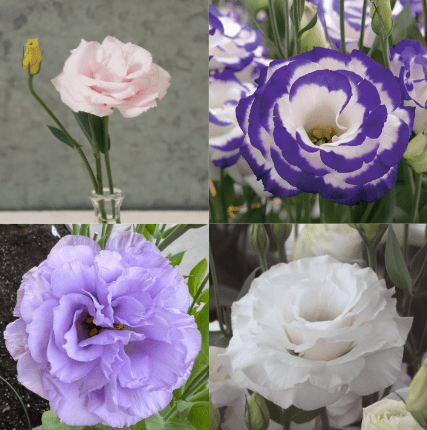
B. Factors to consider when selecting a variety
When selecting a lisianthus variety for your garden, there are several factors to consider. Consider the size of the plant, the climate in your area, and the specific colors you prefer. Additionally, consider the overall look and feel of your garden and how the lisianthus will fit in with the rest of your plants. It’s important to do some research and planning to ensure you choose the right variety for your specific needs and garden environment.
Planting Lisianthus
A. Best time to plant lisianthus
The best time to plant lisianthus is in the spring, after the danger of frost has passed. Lisianthus plants prefer warm, sunny conditions and well-drained soil. It’s important to give them plenty of space to grow and provide support as they can grow quite tall. Make sure to water them regularly, but avoid overwatering as they don’t like to sit in waterlogged soil. With proper care, lisianthus can thrive and add beauty to your outdoor space.
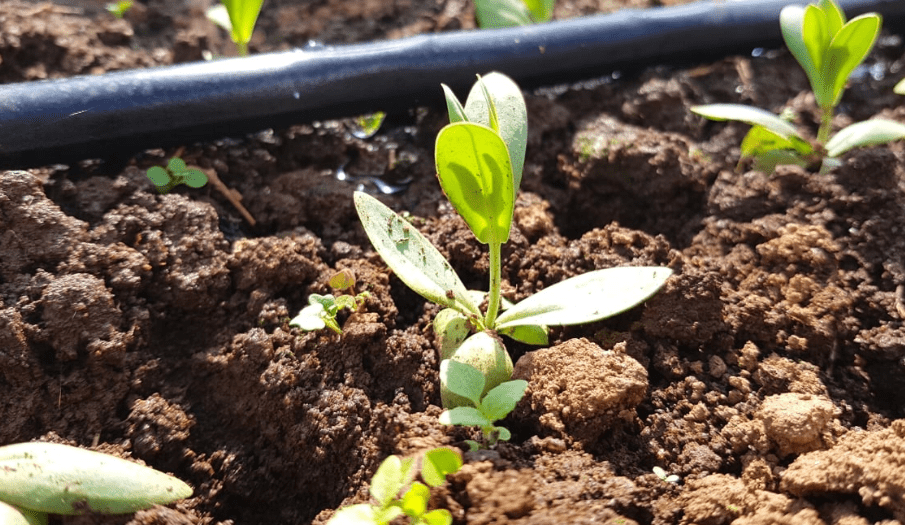
B. Selecting the right location
When selecting the right location to plant lisianthus, it’s important to choose a spot that receives plenty of sunlight. Lisianthus plants thrive in full sun, so look for a location that gets at least 6-8 hours of direct sunlight each day. Additionally, make sure the soil is well-drained to prevent waterlogging, as lisianthus plants do not like to sit in waterlogged soil. It’s also important to provide ample space for the plants to grow, as they can reach heights of 1-3 feet. By selecting the right location, you can ensure that your lisianthus plants have the best chance of thriving and producing beautiful blooms.
C. Preparing the soil
1. Soil testing and amendments
Before planting lisianthus, it’s important to prepare the soil to create an optimal growing environment for the plants. Conduct a soil test to determine the pH level and nutrient content of the soil. Lisianthus plants prefer a slightly acidic soil with a pH of 6.0-7.0. If necessary, amend the soil with organic matter such as compost or well-rotted manure to improve its structure and fertility. Additionally, consider adding a balanced fertilizer to provide essential nutrients for healthy growth. By preparing the soil properly, you can create a favorable foundation for your lisianthus plants to thrive.
2. Preparing planting beds or containers
When preparing planting beds or containers for lisianthus, ensure that the soil is well-drained and loose to allow for proper root development. Remove any weeds or debris from the planting area and add a layer of organic matter such as compost to improve soil structure and fertility. It’s also important to consider the spacing and depth of the planting area, as lisianthus plants require adequate room for their root systems to spread out. Whether planting in beds or containers, providing a suitable growing environment will set the stage for successful lisianthus cultivation.
D. Step-by-step planting guide
- Choose a sunny location with well-drained, loose soil for planting lisianthus.
- Prepare the planting area by removing any weeds or debris and adding a layer of organic matter such as compost to improve soil structure and fertility.
- Consider the spacing and depth of the planting area, as lisianthus plants require adequate room for their root systems to spread out.
- If planting in containers, ensure that they have drainage holes and use a well-draining potting mix.
- After preparing the soil, plant lisianthus at the appropriate depth and water thoroughly.
- Consider adding a balanced fertilizer to provide essential nutrients for healthy growth.
By following these steps, you can create a favorable foundation for your lisianthus plants to thrive.
Care and Maintenance
A. Watering requirements
Water lisianthus plants regularly, ensuring the soil is consistently moist but not waterlogged. Avoid overwatering as this can lead to root rot. Monitor the soil moisture and adjust watering as needed, especially during hot and dry periods. Adding a layer of mulch around the plants can help retain moisture and regulate soil temperature.

B. Fertilizing lisianthus
Fertilize lisianthus plants with a balanced, all-purpose fertilizer once a month during the growing season. Be sure to follow the instructions on the fertilizer label to avoid overfeeding the plants. Additionally, consider using a slow-release fertilizer to provide continuous nourishment over time. Avoid fertilizing during the plant’s dormant period, typically in the winter months.
C. Pruning and deadheading
Pruning and deadheading are important tasks for maintaining the health and appearance of your plants. Regular pruning helps shape the plants and encourages new growth, while deadheading removes spent flowers to promote continuous blooming. Be sure to use sharp, clean pruning shears to make clean cuts and minimize damage to the plant. It’s best to prune and deadhead in the early morning or late afternoon to avoid stressing the plants in the heat of the day. Remember to research the specific pruning needs of your plants to ensure you’re doing it correctly.
Managing Pests and Diseases
A. Common pests affecting lisianthus
Common pests that can affect lisianthus plants include aphids, thrips, spider mites, and whiteflies. These pests can cause damage to the leaves and flowers of the plant, and can also spread diseases. Regularly inspecting your lisianthus for signs of pest infestations and taking prompt action to control them is key to keeping your plants healthy. Using insecticidal soaps or neem oil can help control these pests, and introducing beneficial insects like ladybugs can also be an effective natural solution. It’s important to take a proactive approach to pest management to prevent widespread damage to your lisianthus plants.
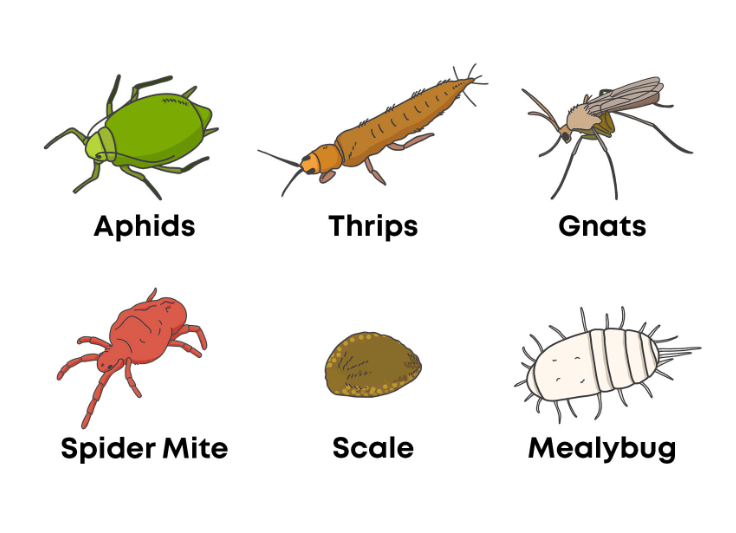
B. Common diseases in lisianthus
Common diseases that can affect lisianthus plants include powdery mildew, botrytis, and root rot. These diseases can cause wilting, browning of leaves, and overall decline in plant health. It’s important to practice good sanitation practices, such as removing infected plant material and ensuring proper air circulation to prevent the spread of these diseases. Using fungicides and soil drenches can also help control and prevent the spread of these diseases. Regularly monitoring your plants for signs of disease and taking prompt action to address them is essential in maintaining the health of your lisianthus plants.
C. Organic and chemical control methods
Organic control methods for common diseases in lisianthus plants include using neem oil, garlic spray, and copper fungicides. These natural remedies can help prevent and control diseases while minimizing the use of chemicals. Additionally, practicing good cultural practices such as proper watering and fertilization can also help maintain plant health and prevent disease.
Chemical control methods for lisianthus diseases include using fungicides and soil drenches that are specifically formulated to target powdery mildew, botrytis, and root rot. It’s important to carefully follow the instructions on these products and use them in accordance with recommended application rates to effectively control and prevent the spread of diseases.
Regardless of the method used, it’s important to regularly monitor your lisianthus plants for signs of disease and take prompt action to address any issues that may arise. Maintaining a healthy growing environment through proper sanitation and cultural practices is key to preventing and managing diseases in lisianthus plants.
Supporting Lisianthus Growth
A. Staking and support for taller varieties
Staking and supporting taller varieties of lisianthus is essential for preventing the plants from bending or breaking under the weight of their flowers. Using stakes, trellises, or other supports can help to keep the plants upright and promote healthy growth. It’s important to install stakes or supports early in the growing season to avoid damaging the plant’s roots or stems. Additionally, regularly checking and adjusting the supports as the plants grow can help to ensure they remain well-supported throughout the growing season.
B. Pinching back for bushier growth
Pinching back lisianthus plants can encourage them to grow bushier and produce more blooms. This involves removing the top growth of the plant, which stimulates the growth of lateral branches and ultimately results in a fuller, more compact plant. It’s best to pinch back the plants when they are still young and actively growing, and to continue doing so throughout the growing season as needed. This practice not only helps to promote a more aesthetically pleasing plant, but it can also increase flower production and overall plant health.
Propagating Lisianthus
C. Methods of propagation
There are several methods of propagating lisianthus plants, including by seed, stem cuttings, and division.
– Propagating by seed involves collecting and planting the seeds in a suitable growing medium, and providing the right conditions for germination and growth. This method can be more time-consuming, but it allows for a wide variety of new plants to be grown.
– Stem cuttings can be taken from healthy, established plants and rooted in a suitable growing medium. This method can result in plants that are genetically identical to the parent plant and can be a quicker way to produce new plants.
– Division involves separating the root system of an established plant into smaller sections, each with its own set of roots and shoots, and replanting them to grow into new plants. This method is suitable for plants that have multiple stems and can help rejuvenate older plants.
Each method has its own advantages and challenges, and the choice of propagation method will depend on the specific needs and goals of the grower.
Designing with Lisianthus
A. Garden design ideas incorporating lisianthus
Incorporating lisianthus into garden designs can add a beautiful and elegant touch to any outdoor space. These versatile flowers can be used in a variety of ways to enhance the overall aesthetic of a garden.
– Planting lisianthus in flower beds or borders can add a pop of color and provide a focal point for the garden. Their tall, sturdy stems make them a great option for creating height and structure in the garden.
– Lisianthus can also be used in container gardens or hanging baskets, adding a soft and romantic feel to outdoor spaces like patios and balconies. Their long-lasting blooms make them a great choice for adding a touch of elegance to outdoor living areas.
– Mixing lisianthus with other annual or perennial flowers can create visually stunning combinations, adding depth and texture to the garden. They come in a variety of colors, making them easy to coordinate with other plants and flowers.
– For a more formal or structured garden design, lisianthus can be used in formal flower arrangements or as part of a cut flower garden. Their versatile nature makes them a great addition to any style of garden design.
Overall, incorporating lisianthus into garden designs can add a touch of elegance and beauty, whether used as a focal point or as part of a larger planting scheme. Their versatility and long-lasting blooms make them a great choice for any garden setting.
B. Complementary plants and companions for lisianthus
1. Roses
Roses make a great companion plant for lisianthus. Their classic, romantic blooms complement the elegant and long-lasting flowers of the lisianthus, creating a beautiful and timeless garden display.
2. Salvia
The tall, spiky blooms of salvia can complement the lower-growing, delicate blooms of lisianthus. They also come in a variety of colors, allowing for a coordinated and visually appealing garden design.
3. Lavender
Lavender is a great complementary plant for lisianthus. Its fragrant blooms and silvery foliage can provide a lovely contrast to the lisianthus’ colorful and elegant flowers. Plus, both plants thrive in similar growing conditions, making them easy to care for together in the garden.
Harvesting and Using Lisianthus
A. Harvesting flowers for arrangements
When harvesting lisianthus flowers for arrangements, it’s best to do so in the early morning or late evening when the temperatures are cooler. Cut the stems at a 45-degree angle and immediately place them in a bucket of water to keep them fresh. Remove any leaves that will be below the water line in your arrangement to prevent decay. Lisianthus can last up to two weeks in a vase if properly cared for.
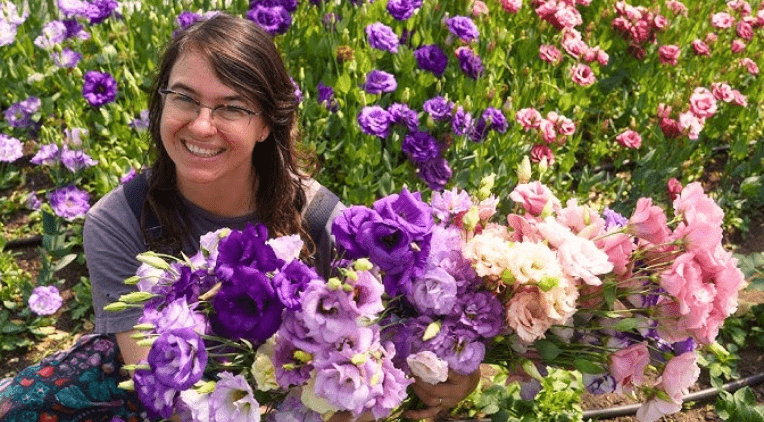
B. Preserving and conditioning cut flowers
To preserve and condition cut lisianthus flowers, it’s important to remove any foliage that will be submerged in water to prevent bacteria growth. Then, recut the stems at a 45-degree angle and place them in warm water for a few hours to condition them. After conditioning, transfer the flowers to a vase with clean water and flower preservative. Change the water every few days to keep the flowers fresh and extend their vase life. Lisianthus flowers can also be air-dried or pressed for longer-lasting arrangements.
C. Creative uses for lisianthus in floral design
In floral design, lisianthus can be used in a variety of creative ways. They are often used as focal flowers in arrangements due to their large, showy blooms. They can also be used to add texture and depth to bouquets and centerpieces. Lisianthus is a versatile flower that can be paired with a wide range of other flowers and greenery to create stunning and unique designs. Consider using lisianthus in bridal bouquets, corsages, and boutonnieres, or as a standalone arrangement for a special occasion. Their long vase life makes them a great option for both fresh and dried floral designs.
In conclusion, growing and caring for lisianthus plants requires attention to detail and proper maintenance. By following the tips and tricks outlined in this post, you can create a beautiful garden filled with these gorgeous flowers. Remember to provide adequate sunlight, water, and nutrients to ensure the health and vitality of your lisianthus plants. With the right care, you can enjoy these stunning blooms in your garden for years to come.
Frequently Asked Questions (FAQs)
Lisianthus plants thrive in well-drained soil and full sun. It’s best to plant them in a location with good air circulation to prevent disease.
Lisianthus plants prefer to be watered deeply but infrequently. Allow the soil to dry out slightly between waterings to prevent root rot.
Yes, it’s a good idea to fertilize lisianthus plants every 4-6 weeks during the growing season with a balanced fertilizer.
Yes, lisianthus plants can be grown indoors in containers as long as they receive plenty of sunlight.
Keep an eye out for aphids, spider mites, and powdery mildew. Regularly inspect your plants and treat any issues promptly.
Lisianthus plants can bloom for several weeks, and with proper care, they can produce flowers from early summer to fall.
Yes, lisianthus plants can be propagated from stem cuttings. Simply take a cutting from a healthy, non-flowering stem and root it in moist soil.
Lisianthus plants prefer temperatures between 50-80 degrees Fahrenheit, making them suitable for both indoor and outdoor growing in many climates.
